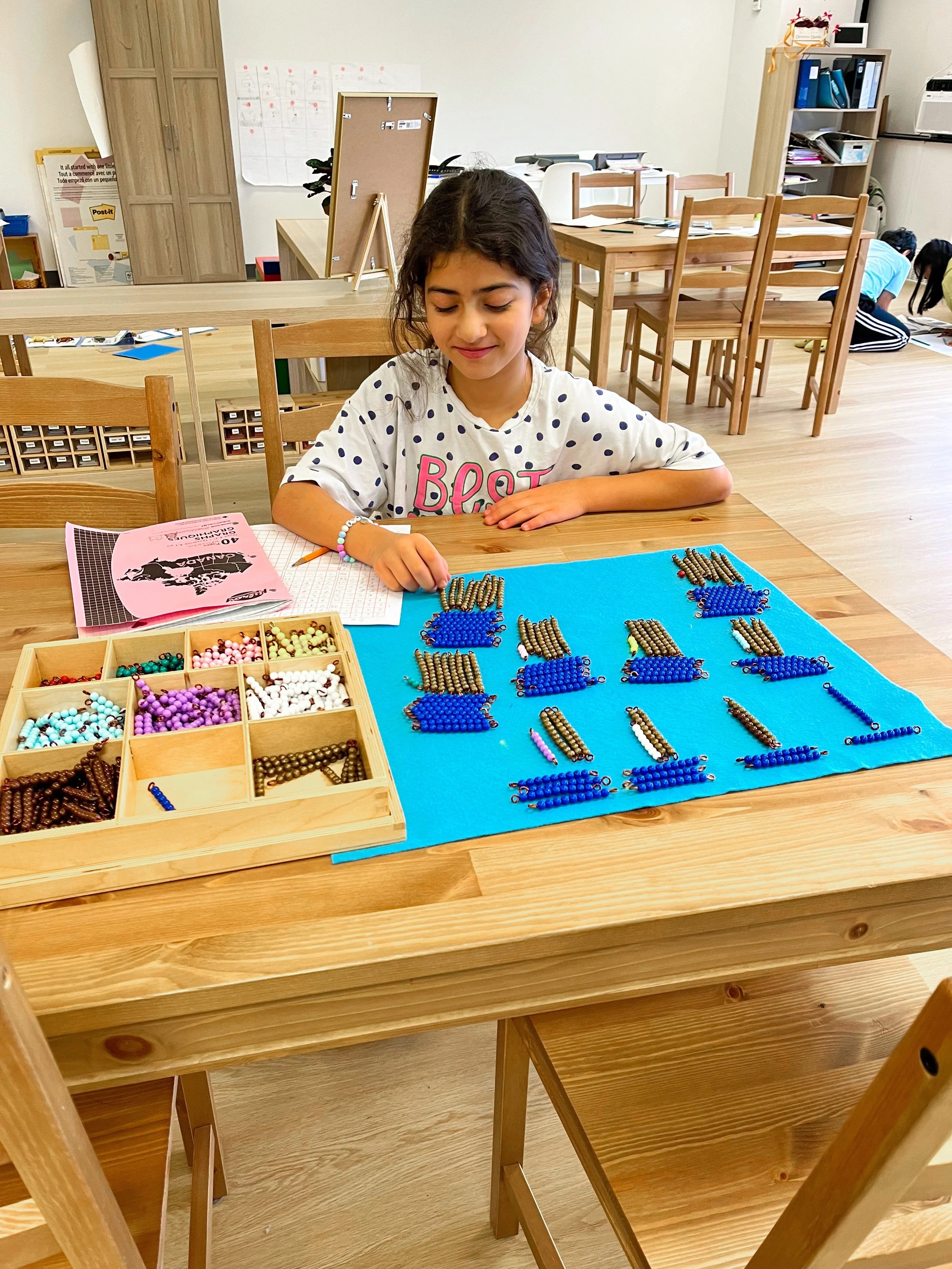
Learning Overview
The Montessori philosophy
Blossom Montessori School is founded by an AMI Elementary Guide. The Montessori method of education was developed by Dr. Maria Montessori who was the first female Italian physician. Dr. Montessori developed her approach through the scientific observation of children all over the world. Through her observations, Dr. Montessori found consistent, naturally developing tendencies and characteristics that would serve as the foundation for the creation of optimally prepared environments that encourage and support the realization of children’s full potential.
Every teaching method, however, sparks moments of learning. Then why is Montessori so different? The difference is the method itself. The mind of a child is like a sponge—absorbing everything, always ready to learn something new. The primary goal of Montessori education? To turn that spark into a lifelong flame.
Imagine a school…
where education is viewed not just as a means to an end, but as an aid to life; where the method for learning comes not from a curriculum, but from the natural development of your child; a place where creativity, innovation, and individuality are valued as much as concentration, motivation, and persistence; where your child is not just a student, but also a teacher.
How BMS has adopted key Montessori principles across all levels:
Multimodal Learning
Learning happens through movement, touch, sight and sound.
Observation
Observation of the child reveals the proper timing for the presentation of new information and experiences academically, socially and personally.
Classroom Community
The classroom experience should build on the desire of the child to master his or her environment. The classroom community is child-centered rather than adult-centered.
Mixed Age Classrooms
Placing children in mixed age groups, corresponding to planes of development, allows them to relate to children who are both older and younger. It also allows for a “confidence interval” around learning in that a child is not labeled as either behind or gifted simply because they acquire a concept a little earlier or a little later than same age peers.
Developmental
Awareness of the needs and abilities during specific times of development allows for optimal engagement and learning for the child.
Material
The use of self-correcting materials allows children to manipulate and explore at their own pace, experience satisfaction and develop self-confidence with success.

New Francophone Program!
The only school in Ottawa providing high-quality Montessori education in French.
Toddler
Our Montessori program for children aged 18 months to 3 years is led by an AMI-certified teacher with over 20 years of experience.
Casa
The curriculum supports your child's development from ages 3 to 6, building a strong foundation in math, language, science, geography, and practical life skills.
Elementary
For children aged 6 to 12, our program combines the advanced academic rigor of the Montessori method with interdisciplinary learning in math, language, biology, geography, and history, fostering curiosity and critical thinking.










